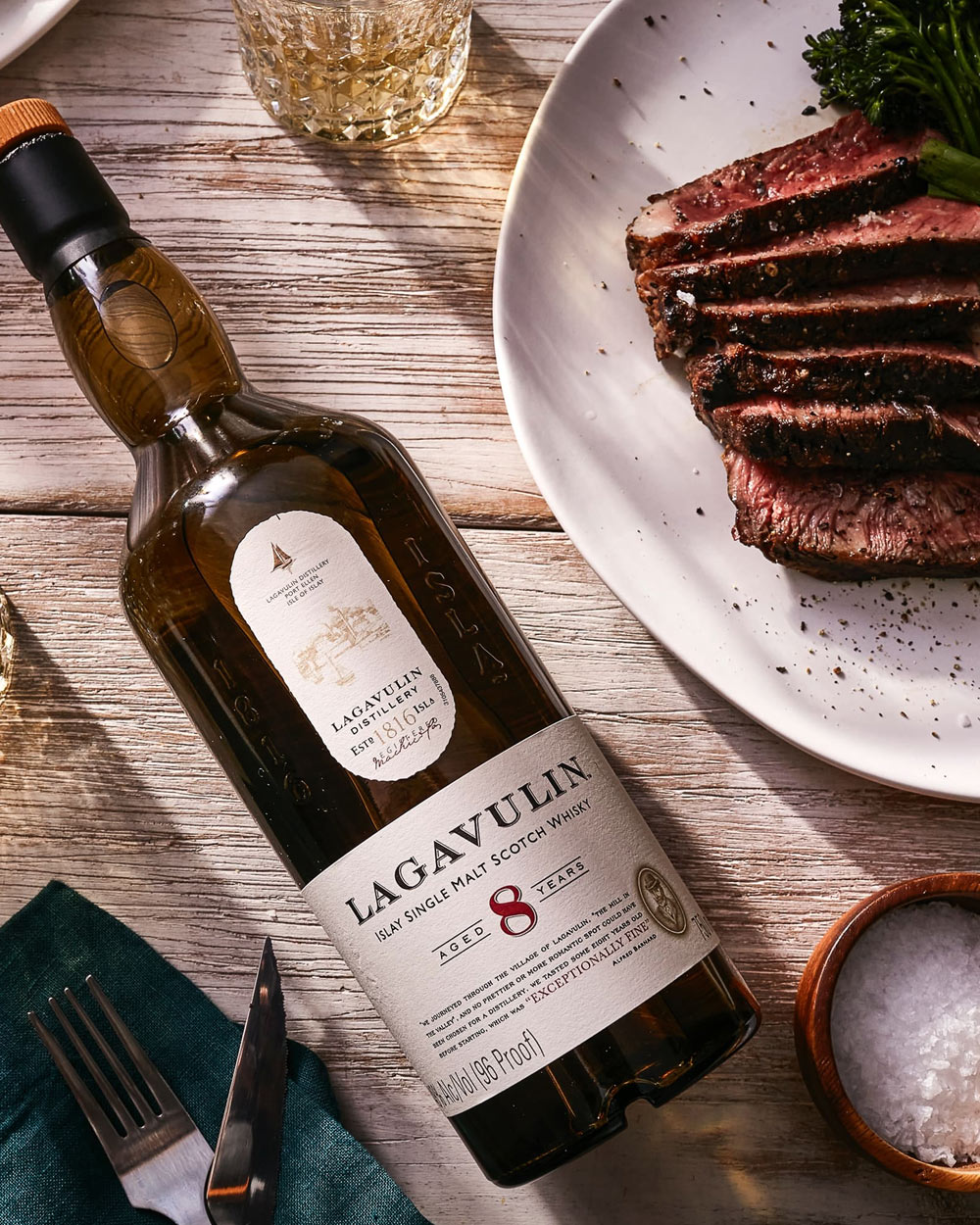Japanese cocktails are widely considered among the world’s finest,
but until now, even seasoned mixologists haven’t a clue about what makes these seemingly simple drinks special. In ‘The Japanese Art of the Cocktail,” master mixologist Masahiro Urushido teamed up with author Michael Anstendig to reveal the essence of the craft that’s rooted in discipline and precision in their book, The Japanese Art of the Cocktail. Anstendig plumbs the depths of Urushido’s cocktail lexicon to deliver a gorgeous collection of recipes that propelled Katana Kitten, Urushido’s New York City-based Japanese-American bar, into the top 20 of The World’s 50 Best Bars competition last year.
But as you thumb through the pages of what was recently named a “Best Book of 2021” by Barnes & Noble, you realize what’s in your hands is more than just another collection of fancy drinks. The Japanese Art of the Cocktail is a multi-layered memoir, history book, and travel guide that Anstendig weaved together with Urushido’s food and drink recipes. The result is an instant classic that delivers on its title’s promise of revealing the art of the Japanese cocktail.

“It was a privilege to share Masahiro’s epic life story,” says co-author Michael Anstendig. “It was important to start with his humble upbringing in the Japanese countryside, his arduous cocktail apprenticeships in Tokyo, and ultimately becoming a standout bartender in New York City. The book also discusses Japan’s drinks approach, signature spirits, robust bar culture, and unique traditions.”
See below to discover how to master some of Urushido’s expert-level cocktails paired with bonus snack recipes. For a comprehensive collection of over 90 recipes, buy The Japanese Art of the Cocktail below.
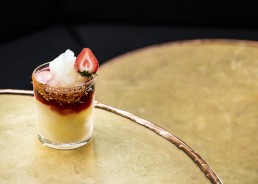
Ruby Fruit
This cocktail is named after a popular bar that used to occupy the space that is now Katana Kitten and is our way of showing of respect to those who came before us. The bar might be gone, but we do our best to honor its spirit and the people who kept it alive. The cocktail’s inspiration is the frozen margarita, but what sets it apart is our house made Tutti-Fruity Cordial. We combine all our bar fruit and veggie odds and ends to make a fruity cordial. It is part of the ethos in Japan that maximizes every ingredient, just as my grandma would carefully wrap even the smallest end piece of a fruit or vegetable and place it respectfully in her fridge. It is very satisfying to give these precious ingredients a full life.
Shichimi Salt (recipe follows), for rimming the glass
Lime wedge, for rimming the glass
1-1/2 ounces Olmeca Altos Plata tequila
1 ounce Tutti-Fruity Cordial (recipe follows)
3/4 ounce fresh lime juice
1/2 ounce ruby port wine
1 cup crushed ice
Garnish: seasonal fruit
Rim half a double old-fashioned glass with shichimi salt (see page 55).Combine the tequila, cordial, lime juice and crushed ice in a heavy-duty blender and blend until the mixture has a silky, slushy consistency. Pour into the prepared glass and float the ruby port on top. Garnish with seasonal fruit.
Save bar fruit, vegetable, and herb odds and ends, such as the end cuts ofcitrus (including limes, lemons, and oranges),cucumber peels, trimmed herbs and vegetables, stone fruit pits, and bruised fruit that isn’t appealing for garnishes, in a resealable plastic storage bag in the freezer to make this cordial.
Makes 2 cups
1-1/2 cups sugar
1 cup leftover bar fruit
1-1/4 cups water
1/2 teaspoon citric acid
Combine the sugar and leftover bar fruit in an airtight 1-quart glass container and refrigerate for 24 hours. Add the water to the mix, stir to dissolve the sugar, and add the citric acid. Strain through cheesecloth into a clean 1-quart glass container. Seal the container and store in the refrigerator for up to 1 month.
Makes 1 cup
1/2 cup shichimi togarashi
1/2 cup Maldon salt
Zest of 1 lemon, grated using a Microplane
Combine the shichimi togarashi, salt, and lemon zest in a mortar and use the pestle to combine the mixture. Transfer to an airtight 1-cup glass container. Seal the container and store in the pantry for up to 1 year.
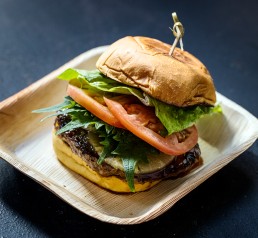
Teriyaki Burger
McDonald’s is famous for their international in-market exclusive offerings tailored to suit local tastes that never make it stateside. McDonald’s in Japan is no exception, offering a teriyaki burger. In Japan, I ate more than my fair share of these beefy delights, which have inspired my own version, complete with our own teriyaki sauce. The addition of the pineapple slice harkens back to my days delivering pizzas in Japan, where our Hawaiian version had the fruity topping, along with mayonnaise and teriyaki sauce. I know this combination is controversial in the pizza world, but it really works well on this burger.
1 (5-ounce) ground beef patty
Salt
1 Martin’s potato sandwich roll
1-1/2 teaspoons Kewpie mayonnaise
1 lettuce leaf
1 tomato slice
1 shiso leaf
1 tablespoon House Teriyaki Sauce
(recipe follows)
1 slice Pickled Pineapple (recipe follows)
Sprinkle each side of the patty with salt. Cook in a skillet to your preferred doneness and set aside. Toast the bun and spread mayonnaise on each side. Build the sandwich with lettuce, a tomato slice, a shiso leaf, the cooked patty, the teriyaki sauce, and the pineapple.
Makes 2-1/4 cups
1 (20-ounce) can Dole pineapple slices in syrup
3/4 cup white wine vinegar
1 tablespoon kosher salt
1 tablespoon Szechuan peppercorns
Drain the syrup from the sliced pineapple into a small saucepan—it should be about 1-1/2 cups. Add the vinegar, salt, and peppercorns. Bring to a simmer over medium heat, then let cool. Place the drained pineapple slices in an airtight 1-quart glass container. Pour the cooled pickling brine over the pineapple, cover, refrigerate and let pickle for 2 to 3 days. Store in the refrigerator for up to 1 month.
Makes 3 cups
1 cup soy sauce
1 cup Kombu-Infused Sake (recipe follows)
1 cup mirin
1/2 cup sugar
1 teaspoon agar-agar (Kanten Papa brand, if available)
In a saucepan, combine the soy sauce, sake, mirin, and sugar and heat over medium-low heat, stirring to dissolve the sugar. Reduce the heat to low and cook to burn off the sake’s alcohol, concentrate the flavor, and thicken the texture, around 15 to 20 minutes. Remove from the heat, stir in the agar-agar, and allow to cool. Pour into an airtight 1-quart glass container. Seal the container and store in the refrigerator for up to 1 month.
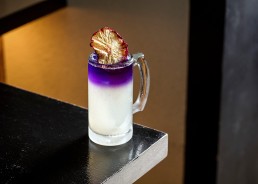
Bright N’ Sunny
My take on the classic Dark ’n’ Stormy gets a colorful twist courtesy of a splash of rum infused with butterfly pea flower, a Southeast Asian plant commonly used for beverages and desserts, and the source of the drink’s distinctive blue hue. Beyond rum, the cocktail incorporates tepache, a fermented beverage popular in Mexico, typically made with pineapple skins, cinnamon, and piloncillo, an unrefined natural cane sugar popular throughout Latin America. The first time I saw a jar of tepache was when one of our bar backs left a batch of it in the walk-in cooler at Saxon + Parole. Due to its funky and suspicious look, I almost tossed it. But thankfully, I came around to appreciating it. Our house version uses the traditional pineapple skins and gives it an Asian twist with lemongrass and ginger, which salutes the Dark ’n’ Stormy’s ginger beer.
5 ounces Ginger-Lemongrass
Tepache (recipe follows)
1/2 ounce fresh lime juice
1-3/4 ounces Butterfly Pea Flower
Tea–Infused Banks 5 Island Rum (recipe follows)
Garnish: dehydrated pineapple wheel
Place an ice spear or a stack of ice cubes in a frozen highball stein, then add the tepache and lime juice. Using the back of a barspoon, float the rum on top to create a vibrant purple layer as the top third of the drink. Garnish with a dehydrated pineapple wheel.
Makes 5-1/2 cups
3/4 cup sugar
4 cups water
Skin of 1/2 pineapple, cut into strips with a paring knife
1 cup finely chopped fresh ginger
2 lemongrass stalks, dry outer husks removed, finely chopped
1/8 teaspoon Champagne yeast (available at homebrewing and winemaking stores or online)
In a large container, dissolve the sugar in the water. Add the pineapple skin, ginger, lemongrass, and yeast and cover the top of the container with cheesecloth so that the mixture can “breathe.” Set aside at room temperature (or at about 65°F) for 24 hours until the mixture has a funky yet tropical pineapple aroma. Transfer to a large stockpot. Bring the mixture to 185°F over medium heat and simmer for 5 minutes. Strain through cheesecloth into a 1-liter glass bottle and chill completely. Carbonate using an iSi Soda Syphon or other home carbonation system. Store in the bottle in the refrigerator for up to 1 week.
Makes 750ml
1 (750ml) bottle Banks 5 Island rum
1-1/2 teaspoons butterfly pea flower tea leaves
Combine the rum and tea in an airtight 1-1/2 pint glass container and infuse for 2 hours. Strain through cheesecloth into the original rum bottle. Store at room temperature for up to 1 year.
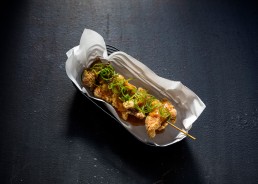
Fujimi Crispy Chicken
Starting close to home, our top-selling Fujimi Crispy Chicken is actually inspired by my Fujimi obaachan (maternal grandma), right down to the soy-garlic-and-sake marinade, as well as her signature Sweet-and-Sour Scallion Sauce. It was something that I grew up eating. Fujimi is the name of her town in Nagano, not far from Minowa. I’m very proud to serve the dish and our guests adore it.
½ teaspoon grated fresh ginger 1/4 garlic clove, minced
1 teaspoon mirin
1 teaspoon sake
1 teaspoon soy sauce
½ pound boneless, skinless chicken thighs, cut into bite-
size chunks
Frying oil (canola recommended)
½ cup potato starch
Sweet-and-Sour Scallion Sauce
In a medium bowl, whisk together the ginger, garlic, mirin, sake, and soy sauce. Add the chicken and marinate for a couple of hours in the refrigerator. Fill a high-sided large saucepan with oil to a depth of 3 to 5 inches and heat over high heat to 350°F. Toss the marinated chicken thighs in the potato starch. Add the chicken to the hot oil and deep-fry until crispy and cooked through, around 4 to 5 minutes. Place on skewers and serve with Sweet-and-Sour Scallion Sauce.
Makes 3 cups
2 cups rice vinegar
1 cup mirin
1/2 cup sugar
1/4 cup white soy sauce
2 scallions, finely chopped
1-1/2 teaspoons sambal
1-1/2 teaspoons chopped fresh ginger
1/2 garlic clove, crushed
1 tablespoon potato starch
In a medium saucepan, combine the vinegar, mirin, sugar, soy sauce, scallions, sambal, ginger, and garlic. Bring to a simmer over medium heat, stirring to dissolve the sugar. Turn off the heat and let cool. Transfer to an airtight glass container, cover and refrigerate overnight. Return the sauce to a pot, heat it over medium-low heat, stir in the potato starch, then remove from the heat and let cool. Pour into an airtight glass container. Seal the container and store in the refrigerator for up to 1 week.
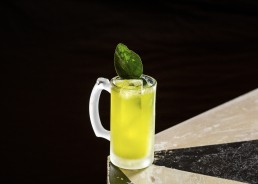
Melon Lime Soda
I have lived in New York City for more than a decade, and during this time I have made countless vodka-sodas with lime for guests. The Melon- Lime Soda is my Japanese-accented salute to this simple yet extremely ubiquitous drink. This drink is super-refreshing and a carefully balanced layers of all things green. Its vibrant green hue comes from Midori reinforced by matcha. Midori, popular here during the Days of Disco, is an emerald-colored, muskmelon flavored liqueur. Absolute Lime vodka, a house made matcha-lime cordial, and a blend of the juice of limes and sudachi, a Japanese citrus fruit with a zesty, sour tang, make for a uniquely tart sipping experience. Interestingly, Midori has an intimate connection to Saturday Night Fever, the film that helped usher in the aforementioned glittery era and catapulted John Travolta to movie stardom. The movie premiered in Manhattan, and the afterparty was held at Ian Schrager’s legendary Studio 54, where, earlier that evening, Midori was introduced to the US for the very first time. Come to think of it, maybe I should have called the drink “Stayin’ Alive”!
1 ounce Absolut Lime vodka
1 ounce Midori
1/2 ounce Matcha-Lime Cordial (recipe follows)
1/4 ounce sudachi juice
1/4 ounce fresh lime juice
Soda water, chilled
Garnish: fresh lime leaves
Place an ice sphere or a stack of ice cubes in a frozen highball stein. Add vodka, Midori, matcha-lime cordial, sudachi juice, and lime juice. Top off with soda water and gently stir. Garnish with a lime leaf.
Makes 2 cups
1-1/4 cups sugar
1-1/4 cups hot water
Zests of 4 limes, cut into strips with a peeler or pairing knife.
2-1/2 teaspoons matcha green tea powder
Set aside 3 tablespoons of the water. Combine the sugar and remaining water in a saucepan and heat over low heat to just below a simmer, stirring constantly. Once all the sugar has dissolved and right before the simmering, remove from the heat, add the lime zest, cover the saucepan, and let cool to room temperature; the edges of the lime zest should be lightly browned. Starting the syrup through cheese cloth into an air tight #1 pint glass container.
IN a small bowl, whisk the matcha powder in the reserved 3 tablespoons water until fully combined. Add the matcha solution to the syrup and stir well to combine. Seal the container and store in the refrigerator for up to one month. Shae the syrup well prior to using as the matcha as the matcha has a tendency to settle on the bottom.
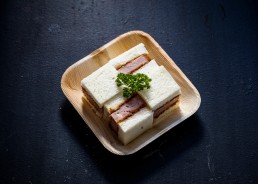
Mortadella Katsu
Our culinary pièce de résistance on our bar menu is the Mortadella Katsu Sando. The inspiration here is hamu katsu, a panko-crusted ham steak that is enormously popular in Japan. We thought why not substitute ham with mortadella, one of the ultimate expressions of porky deliciousness? It worked like a charm, and we sell a ton of the sandwiches that are dressed with Dijon mustard and a house made traditional tonkatsu sauce
Frying oil (canola recommended)
1 (1/2-inch-thick) slice mortadella
1/2 cup all-purpose flour
1 egg, beaten
1 cup Japanese panko bread
crumbs
2 slices Japanese milk bread
1-1/2 teaspoons Dijon mustard
1 tablespoon Tonkatsu Sauce (recipe follows)
Fill a high-sided saucepan with frying oil to a depth of 2 to 3 inches and heat over high heat to 350°F. Dredge the mortadella in the flour, dip it in the beaten egg, and dredge in panko bread crumbs. Add the mortadella to the hot oil and fry until golden brown, about 1-1/2 to 2 minutes for each side, flipping once. Spread the mustard over one slice of Japanese milk bread and the tonkatsu sauce over the other. Place the fried mortadella between the two bread slices, then cut the edges.
Makes 2-1/2 cups
2 teaspoons Japanese karashi mustard
2 cups ketchup
1/2 cup Worcestershire sauce
2-1/2 tablespoons soy sauce
Combine the mustard, ketchup, Worcestershire, and soy sauce in a blender and blend until fully incorporated. Pour into an airtight 21/2-cup glass container. Seal the container and store in the refrigerator for up to 2 weeks.
Spirits writers, marketers and designers are among the most influential forces in the spirits industry. Their opinions, ideas and creative talents inform and influence consumer perceptions and buying decisions. The John Barleycorn Society was started by a group of spirits journalists seeking to honor excellence in all facets of the industry. The journalists spent several years creating a comprehensive competition that became the John Barleycorn Awards. An elite team of authoritative and influential spirits journalists was selected to administer the flagship component of the Awards, a blind tasting competition destined to become the preeminent arbitrator of spirits taste, quality and character.

